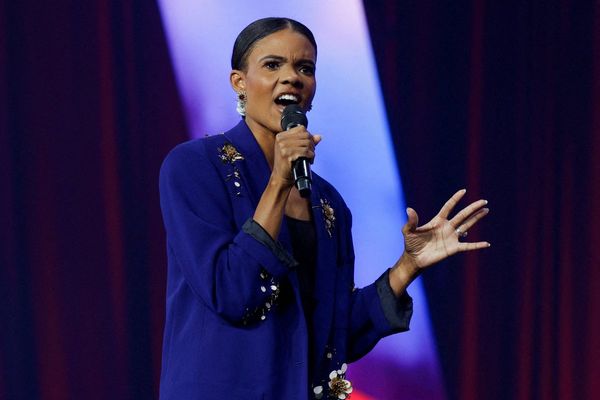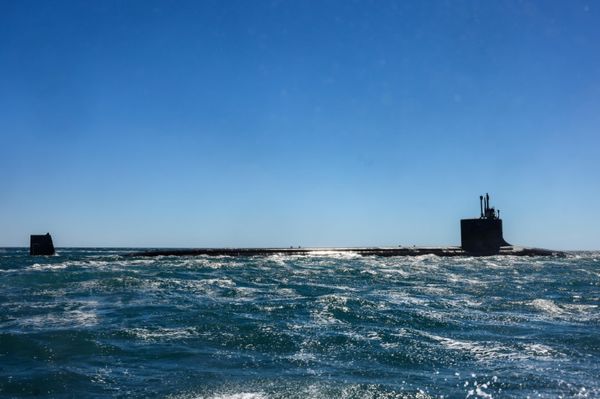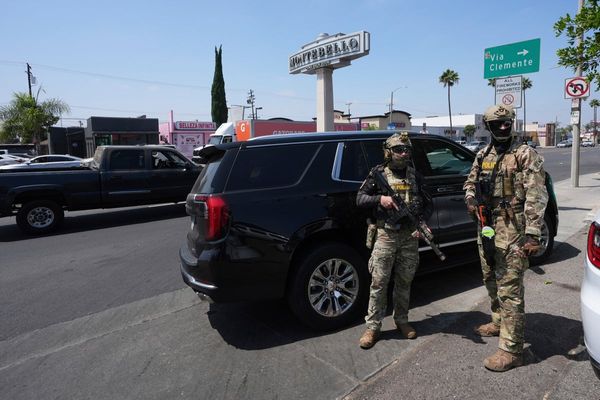
The fragile ceasefire in Gaza faced its first test on Tuesday when Israel said the flow of aid into the devastated Palestinian territory would be cut by half and the crucial Rafah border crossing with Egypt would not open as planned, blaming Hamas for delays in the return of bodies of hostages.
The militant group handed over the remains of four hostages to the International Committee of the Red Cross on Tuesday night, bringing to eight the number of bodies transferred since the US-brokered ceasefire took hold, leaving 20 to be accounted for. Hamas said it was facing obstacles as not all the burial sites had been identified.
Three of the four bodies returned by Hamas late on Tuesday were identified by their families early on Wednesday as Ouriel Baruch, Tamir Nimrodi and Eitan Levy.
The Red Cross, which is overseeing the transfer of remains, warned on Monday that the retrieval was a “massive challenge” given the difficulties of finding bodies in Gaza’s rubble, and could take days or weeks.
But Israel responded severely, accusing Hamas of deliberate delays. It announced the halving of the number of aid trucks allowed into Gaza to 300 a day, and postponed the opening of a major aid crossing point into Gaza from Egypt at Rafah, both violations of the ceasefire agreement brokered by Donald Trump.
That agreement led to the release of the last 20 living Israeli hostages by Hamas on Monday, the freeing of nearly 2,000 Palestinians from Israeli custody and a partial Israeli withdrawal from Gaza. But the next steps, aimed at entrenching the truce and moving towards a lasting peace, are fraught with risk.
Trump urged Hamas to release the remaining bodies, saying it was necessary to enable the next phase of the Gaza plan. “A big burden has been lifted, but the job IS NOT DONE. THE DEAD HAVE NOT BEEN RETURNED, AS PROMISED!” Trump posted on social media. “Phase Two begins right NOW!!!”
Early tensions in the ceasefire were widely expected as Hamas and Israel sought to gain advantage during the implementation of the ill-defined 20-point plan.
But the move to restrict aid and delay the opening of Rafah will come as a shock nonetheless. The crossing was due to open on Wednesday in line with the agreement reached last week, which called for a surge of aid at levels last seen during the short-lived ceasefire in March. During the war, Israel had shut down entry and exit routes, largely blocking off food and medicine, which in turn caused a famine in large parts of Gaza.
The ceasefire plan also called for “all hostages, alive and deceased” to be returned within 72 hours of the agreement’s acceptance, but provided a mechanism if that did not happen, saying that Hamas should share information about any remaining deceased hostages and “exert maximum effort to ensure the fulfilment of these commitments as soon as possible”.
Ela Haimi, whose husband Tal Haimi, 41, was killed when Hamas attacked Kibbutz Nir Yitzhak on 7 October, backed the squeeze on humanitarian aid into Gaza. She said: “I had the information that [Hamas] are not doing everything they can. The Israeli army gave them information and they didn’t use it … We can control how many trucks go inside the strip. We have things we can do and we have to use it.”
She added that she did not believe the Israeli government should or would move on to “phase two” of the peace plan until all the dead hostages were returned.
After the celebrations on Monday, tensions rose throughout a day of sporadic violence in Gaza.
Israeli forces, which pulled back from Gaza City and some other parts of Gaza on Saturday, opened fire on civilians who approached their positions in two separate incidents, reportedly killing six. Under the ceasefire deal, Israeli forces have pulled back to a so-called yellow line but still hold slightly more than half of Gaza.
Mahmud Bassal, a spokesperson for the Gaza civil defence agency, said five people were killed by drones as they inspected their homes in the Shuja’iya district of Gaza City and another died in a drone strike south-east of Khan Younis city.
The Israeli military said its forces had opened fire after repeated warnings to “suspects” who had been identified as threats after approaching their positions in the first incident and a former Hamas arms cache in the second.
Hazem Qassem, a Hamas spokesperson, said the shootings had broken the ceasefire arrangements and Israel was trying to “evade its commitments to the mediators”.
There were further reports of shootings, beatings and firefights across much of Gaza as Hamas continued efforts to reimpose its authority in the territory, sending armed fighters on to the streets and targeting those opposed to its continued rule or aligned with Israel.
In a video circulated late on Monday, Hamas fighters dragged seven men with hands tied behind their backs into a Gaza City square, forced them to their knees and shot them from behind as dozens of onlookers watched from nearby shopfronts.
Trump has given his blessing to Hamas to reassert some control of Gaza, at least temporarily. Israeli officials, who say any final settlement must permanently disarm Hamas, are yet to comment publicly on the reappearance of the group’s fighters on the streets.
On Tuesday night Trump said Hamas would be forced to put down their weapons, telling reporters: “If they don’t disarm we will disarm them and it will happen quickly and perhaps violently.”
The delay in opening the Rafah crossing dismayed humanitarian officials in Gaza, who said only limited supplies had entered since the ceasefire deal was agreed.
The UN said tents for displaced families, frozen meat, fresh fruit, flour and medicines crossed into Gaza on Saturday, but on Monday no trucks had entered from Israel owing to the passage of hostages freed in Gaza, while Tuesday was a Jewish religious holiday so crossings were shut.
“We didn’t witness any significant change on the ground. In the north especially, we need services, tents, water, heavy equipment … Everything, basically. We cannot say there is a flood of aid,” said Amjad al-Shawa, director of the Palestinian NGO Network.
On Tuesday, a Gaza hospital said it had received the bodies of 45 Palestinians that had been handed back by Israel. The agreement signed last week also said Israel would provide information on the remains of Palestinians who died in Israeli custody.
Attention is now focusing on efforts to set up the transitional authority in Gaza and multinational stabilisation force as specified in the deal. Both would be ultimately overseen by a “board of peace” chaired by Trump and possibly led by Tony Blair, the former British prime minister.
Badr Abdelatty, the Egyptian foreign minister, said 15 Palestinian technocrats have been selected to administer Gaza, approved by all Palestinian factions – including Hamas – and vetted by Israel. “We need to deploy them to take care of the daily life of the people in Gaza, and the board of peace should support and supervise the flow of finance and money, which will come for the reconstruction of Gaza,” he said.
As tens of thousands make their way back to their ruined homes, the full extent of the destruction in Gaza is becoming clear.
Jaco Cilliers, a special representative to the UN Development Programme administrator for a programme to help Palestinians, said on Tuesday that the UN, the EU and the World Bank jointly estimated that the reconstruction of Gaza would cost $70bn (£53bn).
“The estimated damage and rubble, throughout the whole of Gaza, is in the region of 55m tonnes … equal to 13 pyramids in Giza,” he said. Cilliers said $20bn would be needed in the next three years, and the rest would be needed over a longer period – possibly decades.







